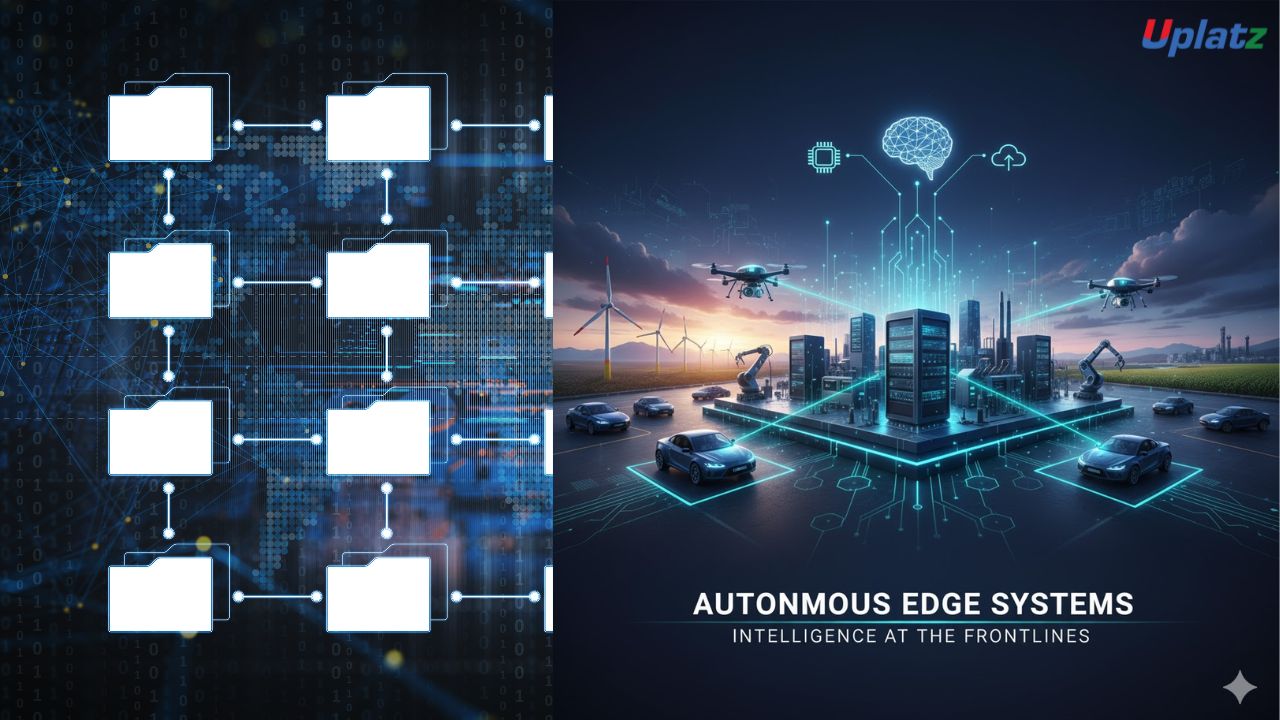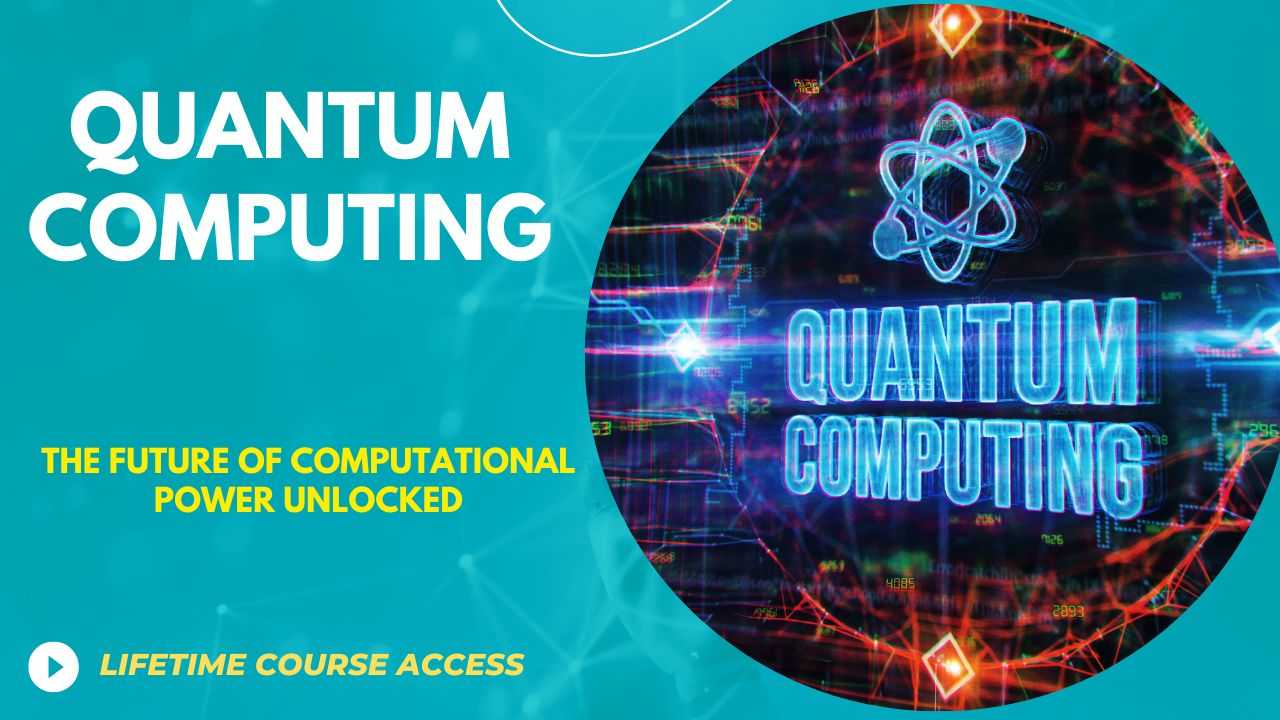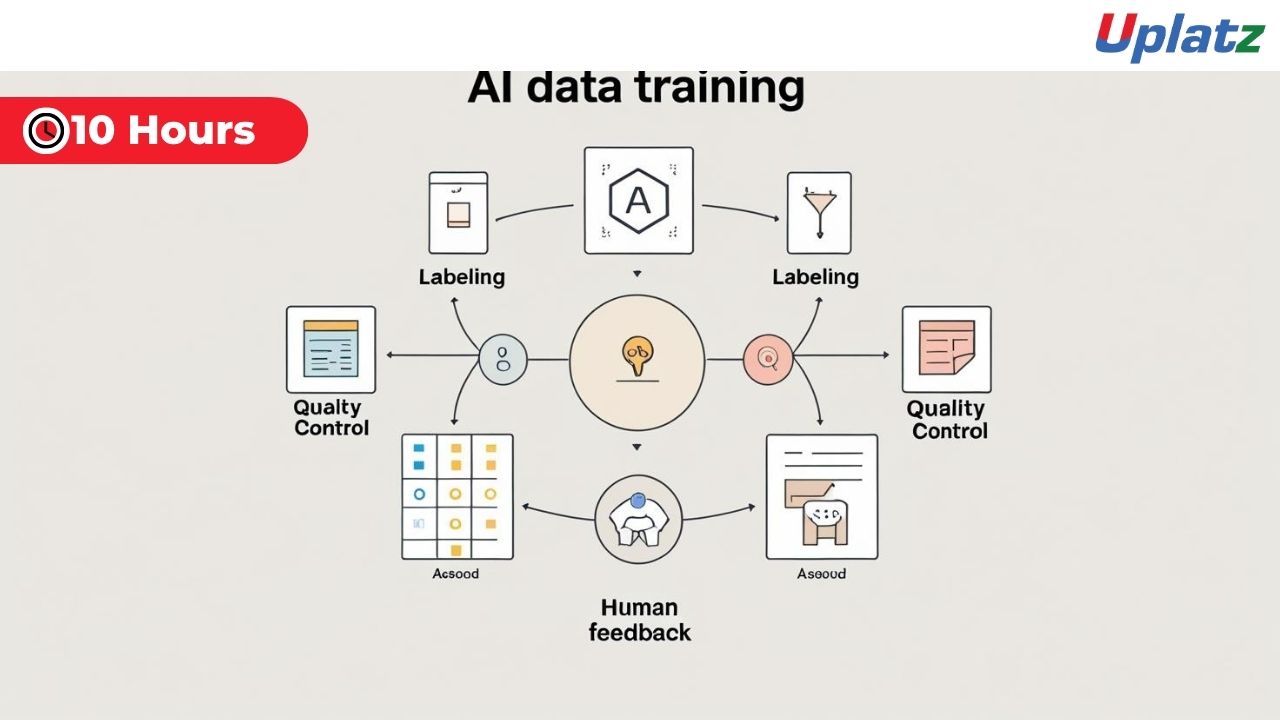Autonomous Edge Systems
Design Intelligent, Self-Managing Systems that Operate at the Edge with Real-Time Decision-Making Price Match Guarantee
Full Lifetime Access
Access on any Device
Technical Support
Secure Checkout
Course Completion Certificate
Price Match Guarantee
Full Lifetime Access
Access on any Device
Technical Support
Secure Checkout
Course Completion Certificate
 97% Started a new career
BUY THIS COURSE (
97% Started a new career
BUY THIS COURSE (GBP 12 GBP 29 )-
 86% Got a pay increase and promotion
86% Got a pay increase and promotion
Students also bought -
-

- Quantum Computing
- 20 Hours
- GBP 12
- 276 Learners
-

- AI Agents for Business Leaders
- 10 Hours
- GBP 12
- 10 Learners
-

- AI Data Training: Labeling, Quality, and Human Feedback Engineering
- 10 Hours
- GBP 12
- 10 Learners

Autonomous Edge Systems represent one of the most advanced frontiers in artificial intelligence — where Edge AI, IoT, robotics, and autonomous decision-making converge to create devices and networks that can sense their environment, process information locally, and act independently. These systems do not rely on constant cloud connectivity; instead, they operate with on-device intelligence, enabling real-time responses, ultra-low latency, energy efficiency, and mission-critical reliability.
The Autonomous Edge Systems course by Uplatz offers deep, hands-on training for engineers, AI developers, system architects, and IoT professionals who want to build next-generation autonomous systems. The course covers distributed edge architectures, embedded AI pipelines, autonomous control loops, reinforcement learning, edge orchestration frameworks (K3s, EdgeX Foundry, Azure IoT Edge), and operational management of decentralized intelligent systems.
Whether you are designing drone navigation intelligence, building smart factory robots, developing autonomous vehicles, or managing next-generation smart grids, this course equips you with the knowledge and practical experience required to create robust, self-reliant edge systems capable of making decisions at the speed of the physical world.
🔍 What Are Autonomous Edge Systems?
Autonomous Edge Systems are decentralized, intelligent devices and networks where AI processing and decision-making take place directly at the edge — close to the sensors, actuators, and physical environment.
These systems integrate:
-
Edge AI: Local inference on-device
-
IoT Sensors: Environmental data collection
-
Robotics / Actuators: Physical actions and control loops
-
5G / LoRaWAN Connectivity: High-speed and long-range communication
-
Distributed Control & Autonomy: Systems that decide and act independently
Examples include:
-
Autonomous vehicles and drones
-
Smart factory robots
-
Intelligent power grids and microgrids
-
Edge surveillance systems
-
Environmental and agricultural monitoring networks
-
Wearable health devices with autonomous alerts
-
Industrial machines performing real-time anomaly detection and corrective actions
The course explores how these systems are designed, deployed, monitored, and improved over time, bridging AI engineering with embedded systems, distributed intelligence, and autonomous control theory.
⚙️ How Autonomous Edge Systems Work
This course breaks down the full lifecycle of autonomy at the edge, from sensory input to decision-making and action:
-
Perception Layer (Sensors & Data Acquisition)
-
Vision, audio, IMU, temperature, lidar, radar, GPS
-
Sensor fusion techniques
-
Near-sensor AI for compression and filtering
-
-
Edge AI Processing Layer
-
Running ML/Deep Learning models on microcontrollers and edge SoCs
-
TinyML, TensorFlow Lite, PyTorch Mobile
-
Real-time inference for detection, prediction, and classification
-
-
Decision-Making Layer (Autonomous Control)
-
Reinforcement learning for adaptive behavior
-
Rule-based vs. neural-controlled autonomy
-
Path planning, obstacle avoidance, feedback loops
-
-
Edge Orchestration Layer
-
K3s (lightweight Kubernetes)
-
EdgeX Foundry
-
Azure IoT Edge
-
Containerized deployment for distributed devices
-
-
Communication Layer
-
5G, LoRaWAN, MQTT, WebSockets
-
Low-latency mesh networks
-
Federated and decentralized coordination
-
-
Action Layer (Actuators & Robotics)
-
Motors, servos, robotic arms
-
Embedded control systems
-
PID and AI-enhanced control algorithms
-
-
Monitoring & Continuous Learning
-
On-device telemetry
-
Edge-cloud hybrid retraining loops
-
Continuous deployment of updated models (MLOps for the edge)
-
This architecture allows edge systems to make decisions instantly, without waiting for cloud responses — critical for safety, mobility, energy systems, and industrial automation.
🏭 Industry Applications of Autonomous Edge Systems
Autonomous edge intelligence is transforming every major industry:
-
Automotive & Transportation
Autonomous driving, collision avoidance, smart traffic management -
Manufacturing & Industry 4.0
Self-correcting robotic arms, predictive maintenance, autonomous quality inspection -
Agriculture
Autonomous drones for spraying, soil monitoring, livestock tracking -
Healthcare & Medical Devices
Remote patient monitoring, wearable diagnostics with autonomous alerts -
Energy & Utilities
Smart grids, decentralized energy management, real-time fault detection -
Smart Cities
Intelligent street lighting, edge-based surveillance, real-time environmental monitoring -
Logistics & Supply Chain
Autonomous delivery robots, sorting systems, warehouse automation -
Aerospace & Defense
Autonomous UAVs, battlefield sensors, distributed situational awareness
Global leaders like NVIDIA, Tesla, AWS, Microsoft, Bosch, Siemens, Motorola, and DJI are heavily investing in autonomous edge technologies — making this skillset extremely valuable and futureproof.
🌟 Benefits of Learning Autonomous Edge Systems
By mastering autonomous edge engineering, learners gain:
-
Expertise in High-Demand Technology
Autonomous systems and edge intelligence are among the fastest-growing fields in AI. -
Cross-Disciplinary Skills
Combine AI, robotics, IoT, networking, and embedded computing into one integrated skillset. -
Real-Time System Design
Learn to build systems capable of decision-making at sub-millisecond speeds. -
Cloud Independence & Resilience
Create systems that operate even in remote or disconnected environments. -
Improved Privacy & Security
Sensitive data stays on-device, reducing compliance and cybersecurity risks. -
Career Growth
Open pathways to robotics engineering, AI engineering, IoT architecture, embedded AI, and edge computing leadership roles. -
Hands-On Engineering Experience
Build fully functional autonomous prototypes and deploy them on modern edge hardware.
📘 What You’ll Learn in This Course
This course provides full-spectrum training on autonomous intelligence at the edge:
-
Foundations of autonomy, edge computing, and distributed AI
-
IoT sensors, actuators, microcontrollers, and embedded circuits
-
Edge AI model design for real-time inference
-
Reinforcement learning for autonomous decision-making
-
Edge orchestration frameworks (K3s, EdgeX Foundry, Azure IoT Edge)
-
Robotic control systems and embedded feedback loops
-
Multi-agent coordination and decentralized decision systems
-
Real-time communication using 5G, MQTT, LoRaWAN
-
Edge MLOps: deploying, updating, and monitoring autonomous models
-
Hybrid edge–cloud learning pipelines
-
Safety design patterns for autonomous systems
-
End-to-end architecture for drones, robots, vehicles, and smart grids
-
Model compression, quantization & hardware acceleration
Learners gain a complete understanding of how to design intelligent edge systems from the ground up.
🧠 How to Use This Course Effectively
To maximize your learning outcomes, follow this recommended structure:
-
Begin with Core Concepts: Autonomy, edge computing, IoT, decision systems.
-
Learn the Architecture: Understand how sensors, compute, and communication interact.
-
Follow Hands-On Labs: Use EdgeX Foundry, K3s, or Azure IoT Edge to deploy workloads.
-
Implement Reinforcement Learning: Train RL models and simulate decision-making loops.
-
Experiment with Robotics Simulators: Use open-source simulators for drones, AGVs, or robot arms.
-
Deploy on Real Hardware: Raspberry Pi, Jetson Nano, ESP32, ARM MCU boards.
-
Set Up Edge Deployment Pipelines: Build CI/CD workflows for edge devices.
-
Complete the Capstone Project: Develop a fully autonomous edge system end-to-end.
This structured approach ensures you gain both conceptual clarity and practical engineering competence.
👩💻 Who Should Take This Course
This course is ideal for:
-
AI Engineers & ML Engineers
-
IoT Engineers
-
Robotics & Automation Professionals
-
Embedded Systems Engineers
-
Cloud & Edge Computing Engineers
-
Smart Factory / Industry 4.0 Engineers
-
Students and professionals entering the autonomous systems field
-
Anyone building intelligent, real-world AI-enabled devices
Some basic understanding of AI or embedded systems is helpful but not mandatory.
🧩 Course Format & Certification
This self-paced online course includes:
-
HD video lessons
-
Real-world simulations and demos
-
Hands-on labs using edge orchestration frameworks
-
Reinforcement learning exercises
-
Architecture blueprints & IoT design templates
-
Practical case studies from robotics, vehicles, and smart grids
-
Quizzes & checkpoint assessments
-
Lifetime access
-
Uplatz Course Completion Certificate
Learners finish with a deployable autonomous edge pipeline and industry-ready skills.
🚀 Why This Course Stands Out
-
Covers autonomy, edge AI, embedded systems, and IoT in one integrated course
-
Includes modern orchestration frameworks (K3s, EdgeX Foundry, Azure IoT Edge)
-
Hands-on reinforcement learning for adaptive autonomy
-
Real deployment on edge devices and robotics simulators
-
Covers safety, resilience, multi-agent coordination, and continuous learning
-
Industry-aligned curriculum based on real autonomous system deployments
This course uniquely blends AI engineering + robotics + IoT + edge computing — giving learners an unmatched skillset for building the future of autonomous technology.
🌐 Final Takeaway
As the world moves toward intelligent machines and connected ecosystems, the ability to build self-governing, reliable, and efficient autonomous edge systems will define the next wave of technological innovation.
The Autonomous Edge Systems course by Uplatz equips learners with the engineering, AI, and system architecture skills needed to build devices and networks that can perceive, reason, and act independently — without relying on cloud connectivity.
Start learning today and become an engineer of next-generation autonomous edge intelligence.
-
Understand the principles of autonomous edge computing.
-
Design architectures for real-time decision-making at the edge.
-
Integrate AI and IoT devices into distributed systems.
-
Apply reinforcement learning to autonomous edge behavior.
-
Deploy and manage edge AI using containerized solutions.
-
Use communication technologies such as 5G and MQTT.
-
Implement data collection, fusion, and local analytics.
-
Ensure reliability, safety, and fault-tolerance in edge systems.
-
Develop adaptive systems that learn continuously.
-
Prepare for roles in AI-driven robotics and industrial autonomy.
Course Syllabus
Module 1: Introduction to Autonomous Edge Systems
Module 2: Edge AI and Distributed Architecture Fundamentals
Module 3: Sensor Networks, Communication, and Data Flow
Module 4: AI Model Deployment and Orchestration at the Edge
Module 5: Reinforcement Learning for Edge Autonomy
Module 6: Edge Frameworks – EdgeX Foundry, K3s, Azure IoT Edge
Module 7: Real-Time Inference and Control Systems
Module 8: Safety, Reliability, and Security in Autonomous Operations
Module 9: Case Studies – Drones, Smart Manufacturing, Autonomous Vehicles
Module 10: Capstone Project – Design an Autonomous Edge Solution
Upon successful completion, learners receive a Certificate of Completion from Uplatz, recognizing their expertise in Autonomous Edge Systems. This Uplatz certification validates your ability to engineer distributed and intelligent systems capable of autonomous decision-making at the network’s edge.
The certification aligns with modern frameworks in Edge AI, IoT orchestration, and intelligent automation, preparing you for cutting-edge roles in robotics, smart infrastructure, and industrial AI. It is ideal for engineers, data scientists, and developers who want to design and maintain AI systems that operate autonomously in dynamic, real-world environments.
This certification is your credential for building reliable, self-learning, and mission-critical systems across industries — from transportation to manufacturing and defense.
The future of technology is autonomous — and it’s happening at the edge. With organizations investing heavily in smart manufacturing, self-driving logistics, and AI-based monitoring, Autonomous Edge Systems professionals are in growing demand.
After completing this course from Uplatz, you can pursue roles such as:
-
Autonomous Systems Engineer
-
Edge AI Architect
-
IoT & Robotics Engineer
-
Industrial Automation Specialist
-
AI Systems Integration Consultant
Professionals in this space earn between $110,000 and $200,000 per year, depending on project complexity and sector.
Career opportunities exist in robotics startups, automotive AI, manufacturing automation, energy systems, and smart infrastructure projects. As companies transition from reactive systems to autonomous networks, engineers trained in this discipline play a pivotal role in ensuring performance, safety, and intelligence at the edge.
This course empowers you to be part of the revolution where AI meets autonomy — designing systems that think and act independently.
-
What are Autonomous Edge Systems?
AI-powered systems that can process data and make decisions locally without centralized control. -
How does Edge AI differ from Cloud AI?
Edge AI runs models near the data source, reducing latency and dependency on cloud networks. -
What technologies enable autonomy at the edge?
AI, IoT sensors, reinforcement learning, edge orchestration, and 5G communication. -
What is Edge Orchestration?
Managing and deploying containerized workloads across distributed edge nodes. -
What are some key frameworks for building Autonomous Edge Systems?
EdgeX Foundry, K3s, Azure IoT Edge, and AWS Greengrass. -
What is Reinforcement Learning’s role in edge autonomy?
It enables adaptive decision-making and self-optimization based on feedback loops. -
What are the biggest challenges in autonomous edge deployment?
Connectivity issues, data privacy, energy efficiency, and real-time reliability. -
What communication protocols are common in edge systems?
MQTT, CoAP, LoRaWAN, and 5G NR. -
What are the benefits of autonomy at the edge?
Low latency, high resilience, data security, and continuous learning capability. -
How do you ensure safety in autonomous edge environments?
By implementing fail-safe mechanisms, redundancy, and continuous monitoring.









